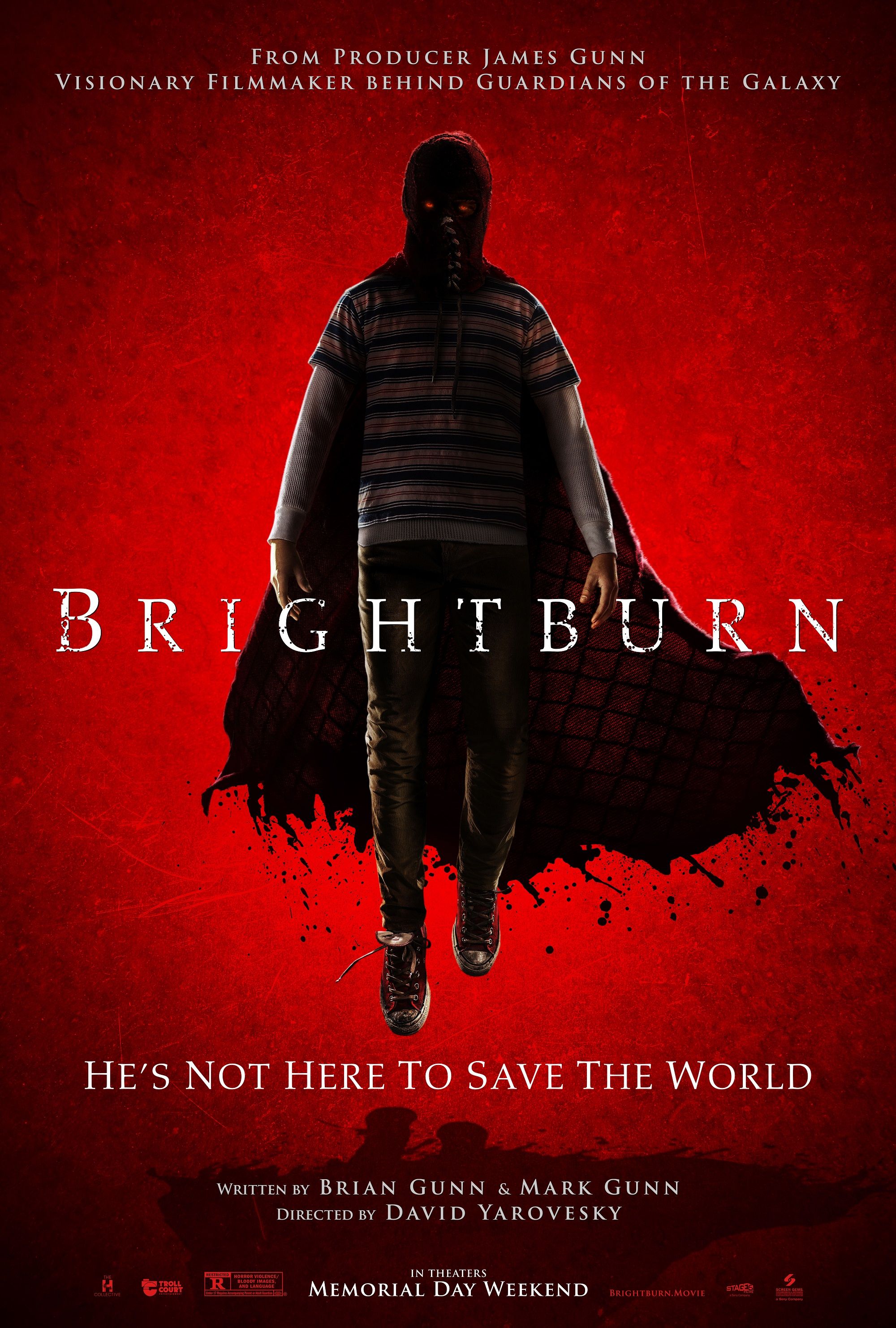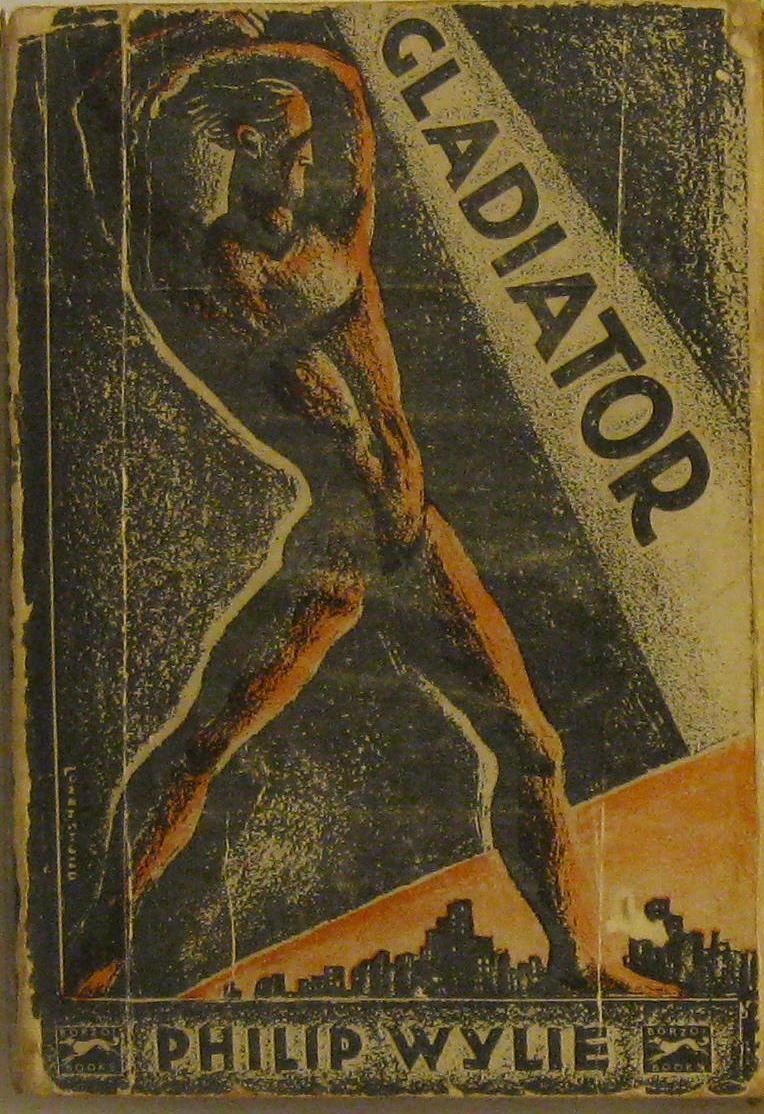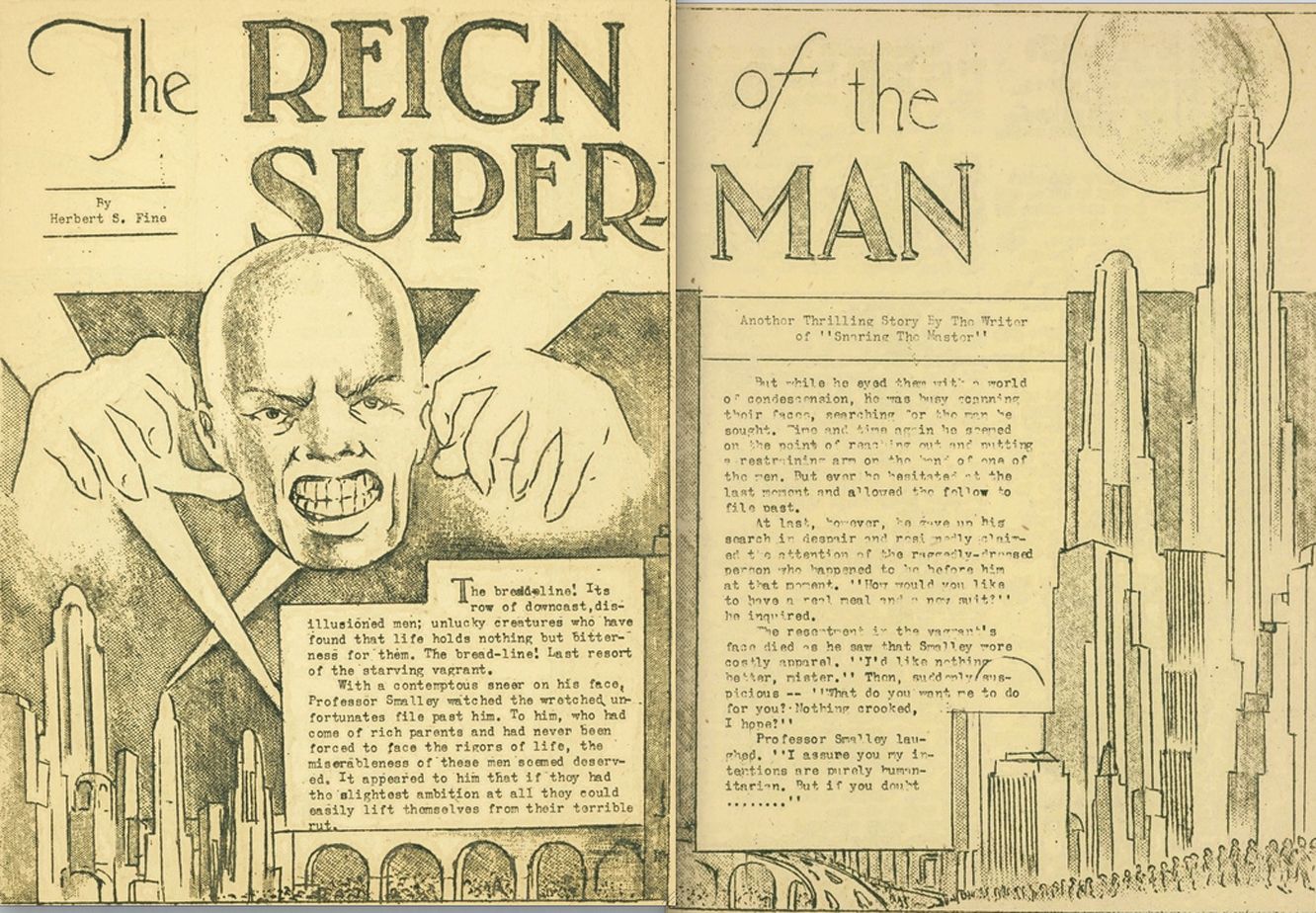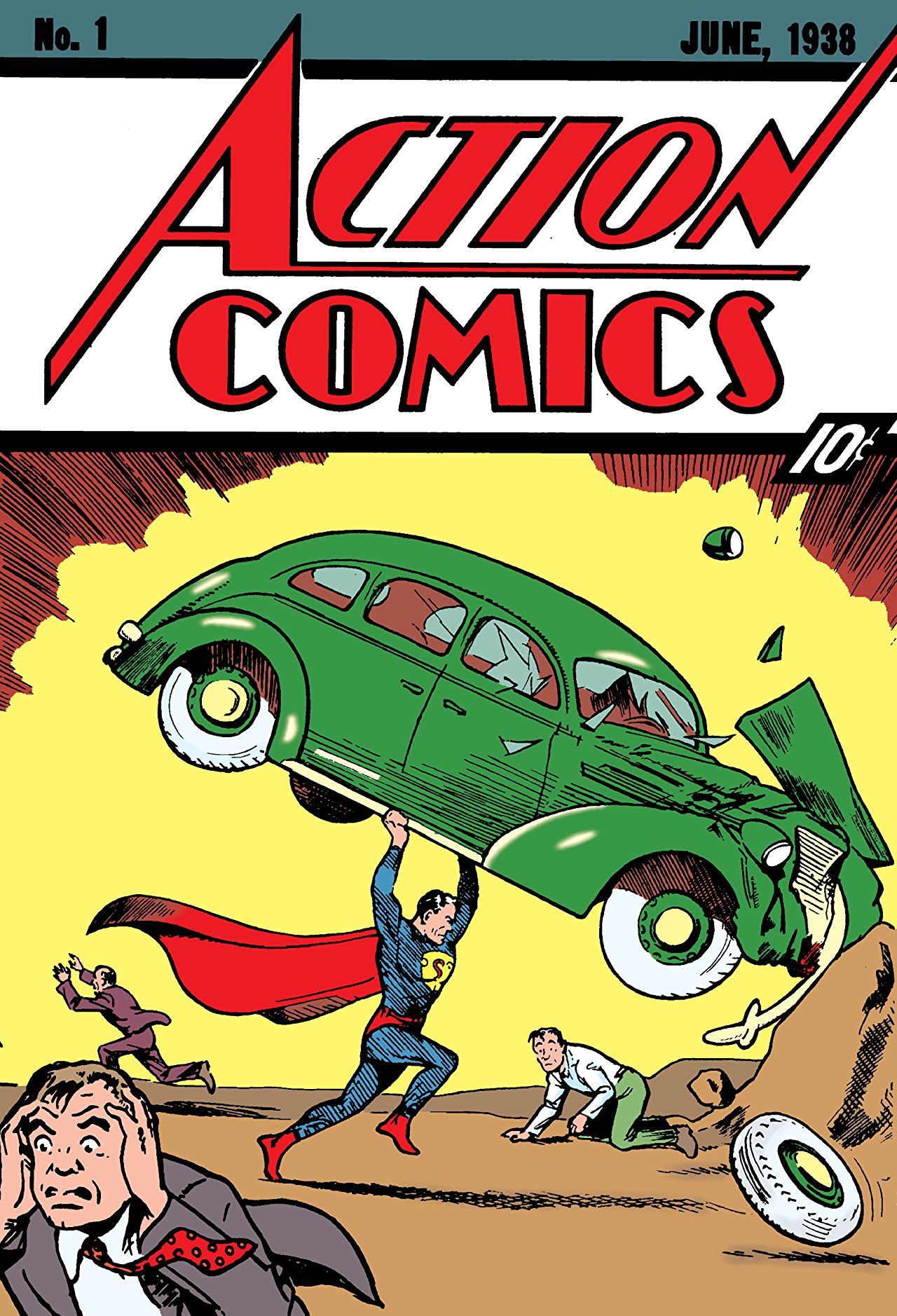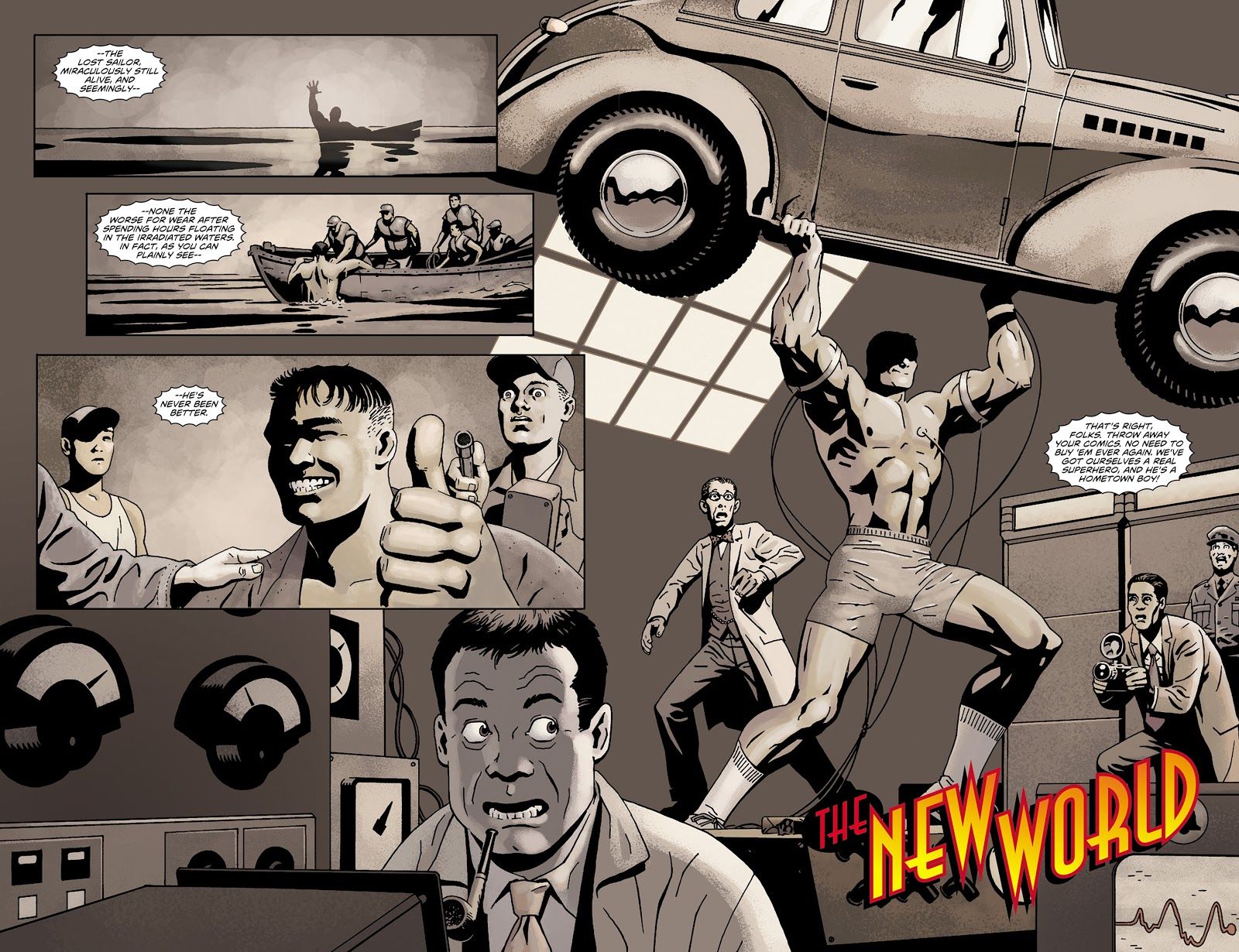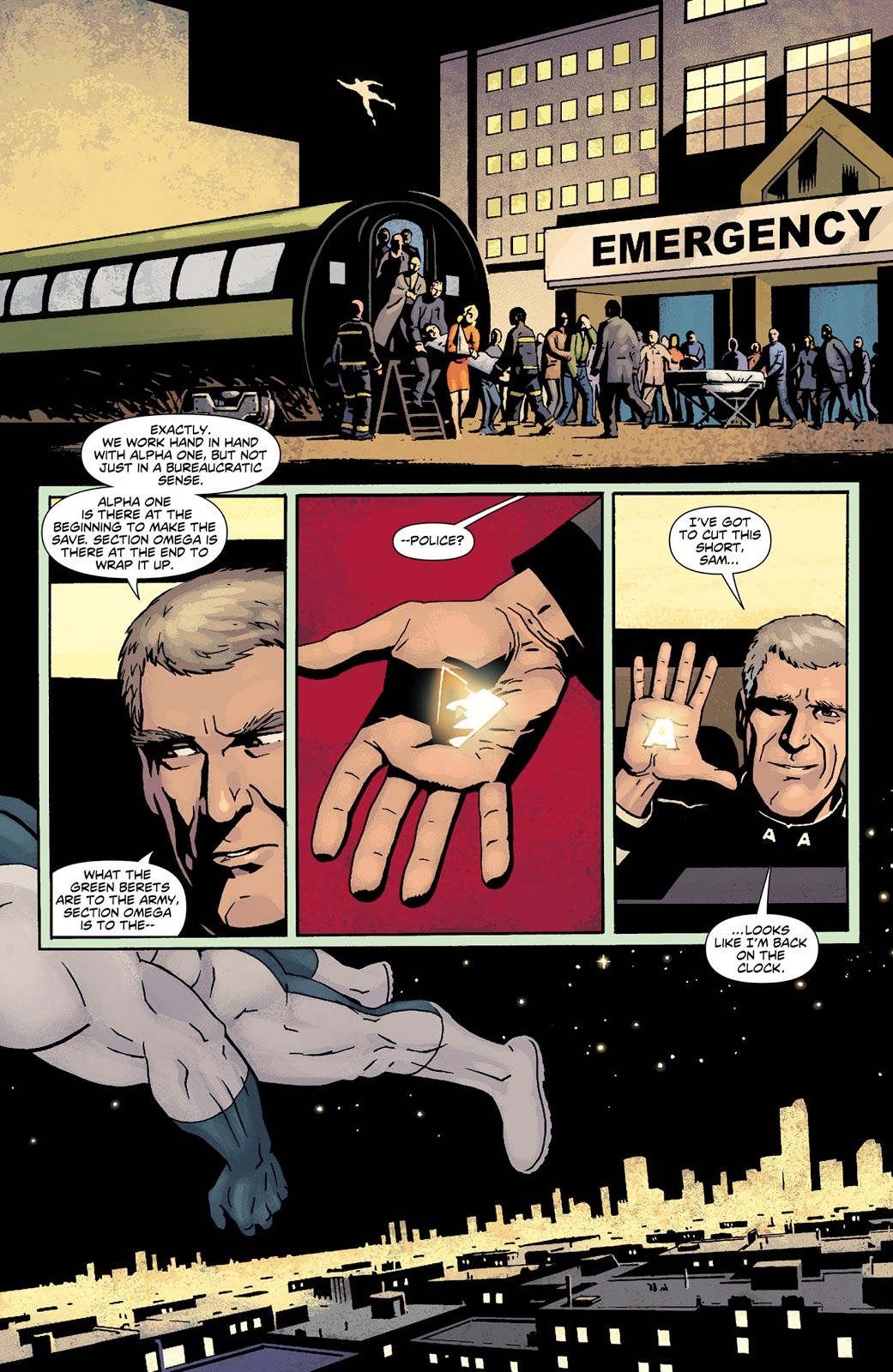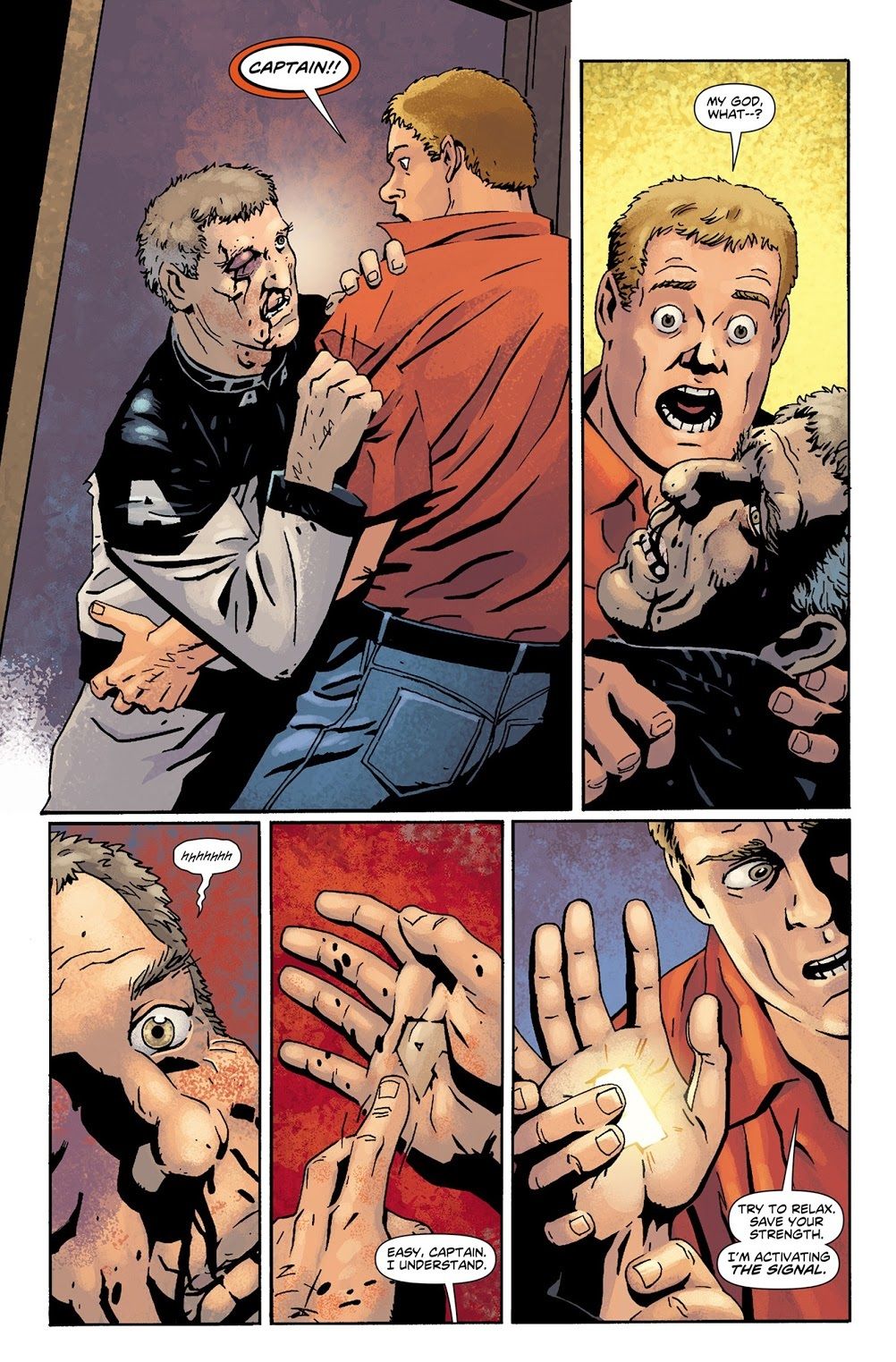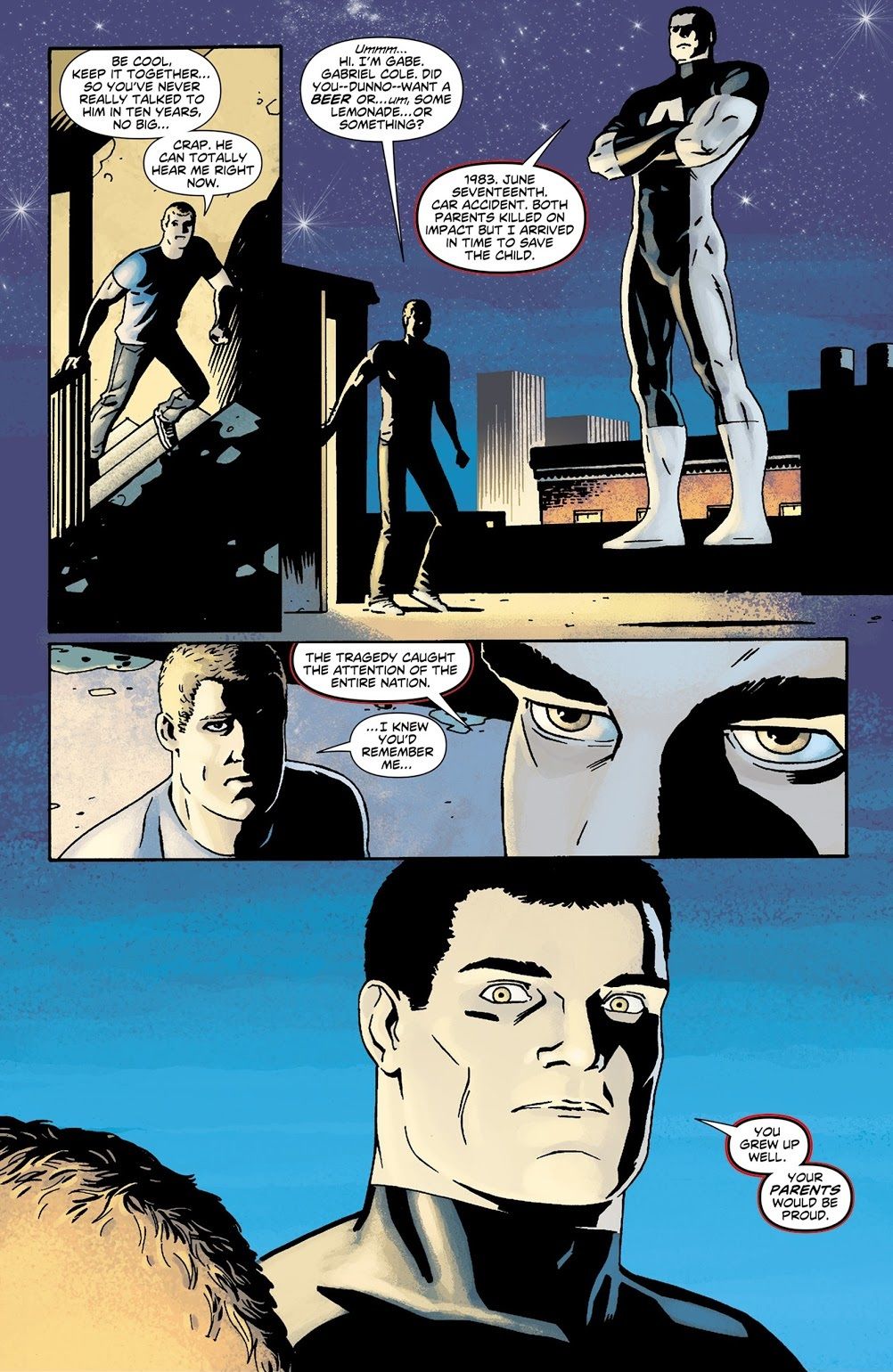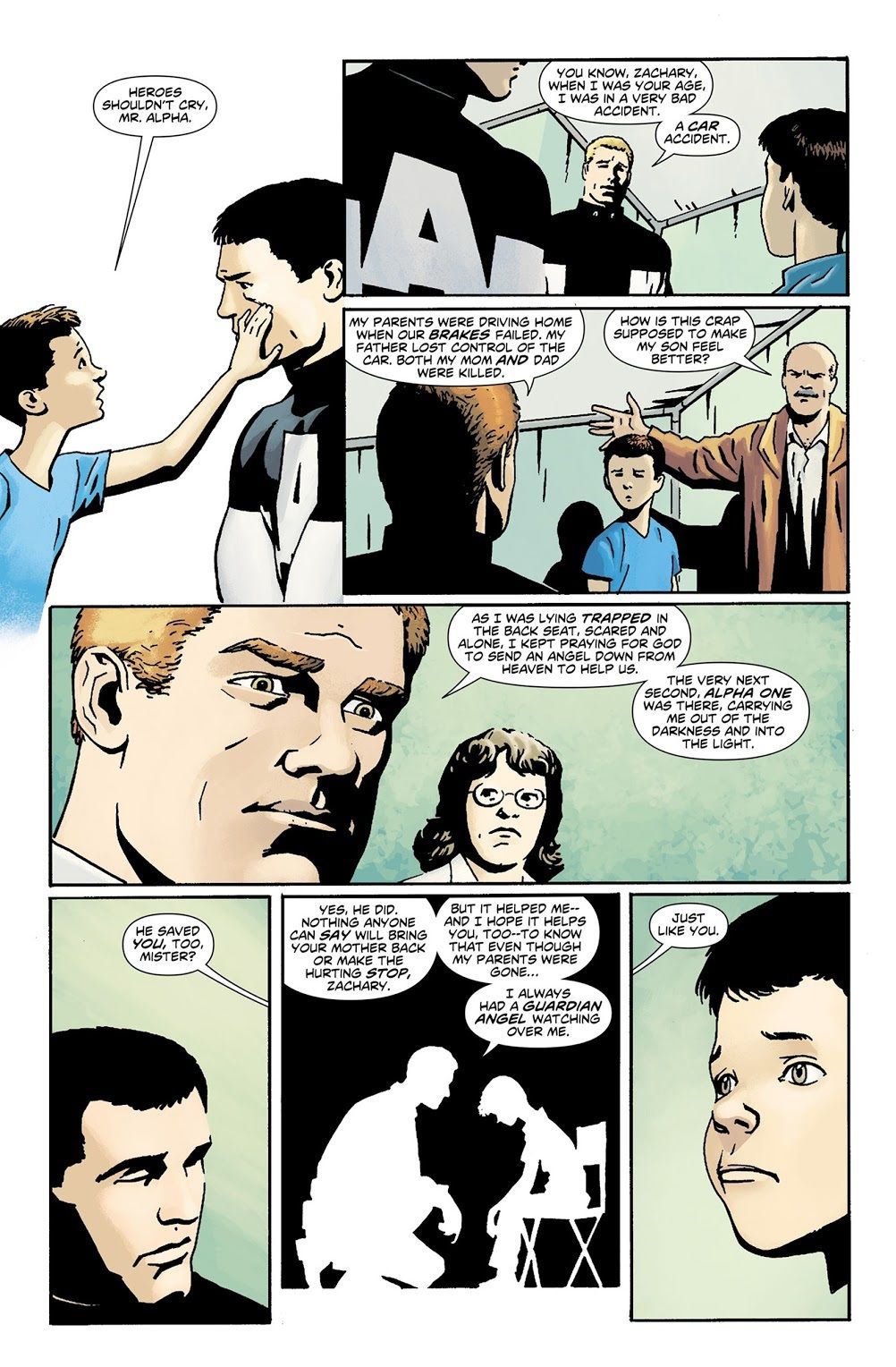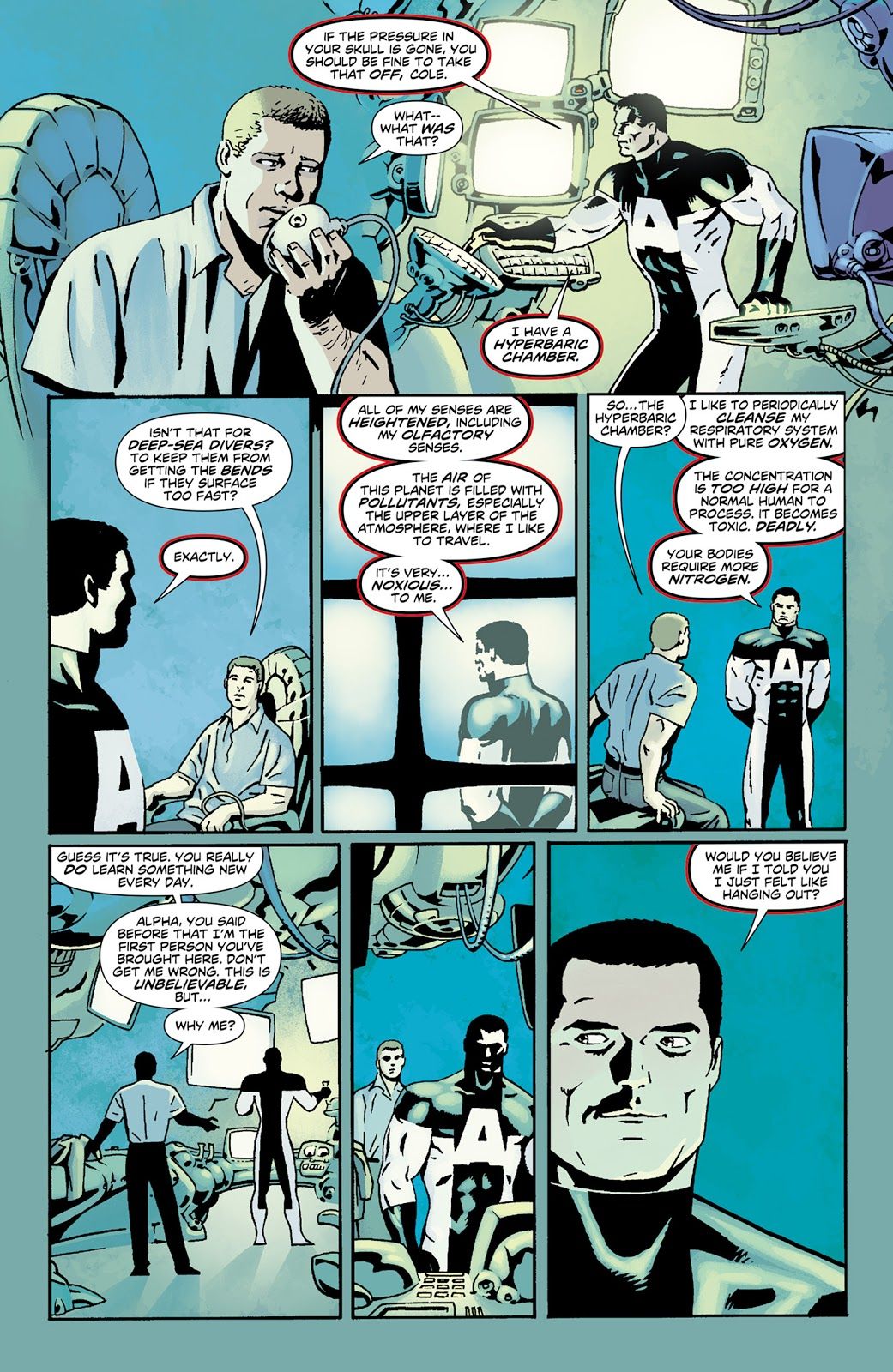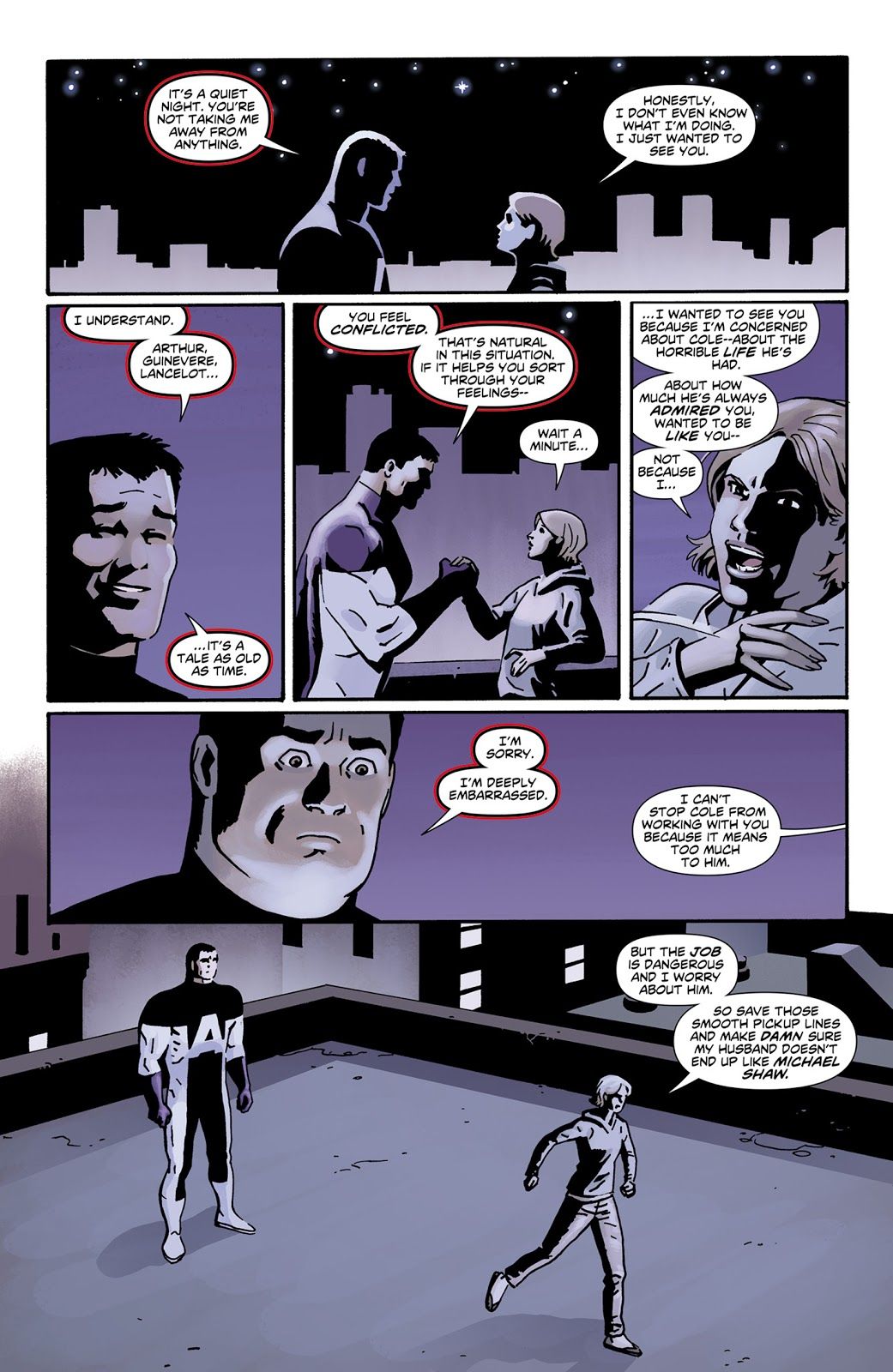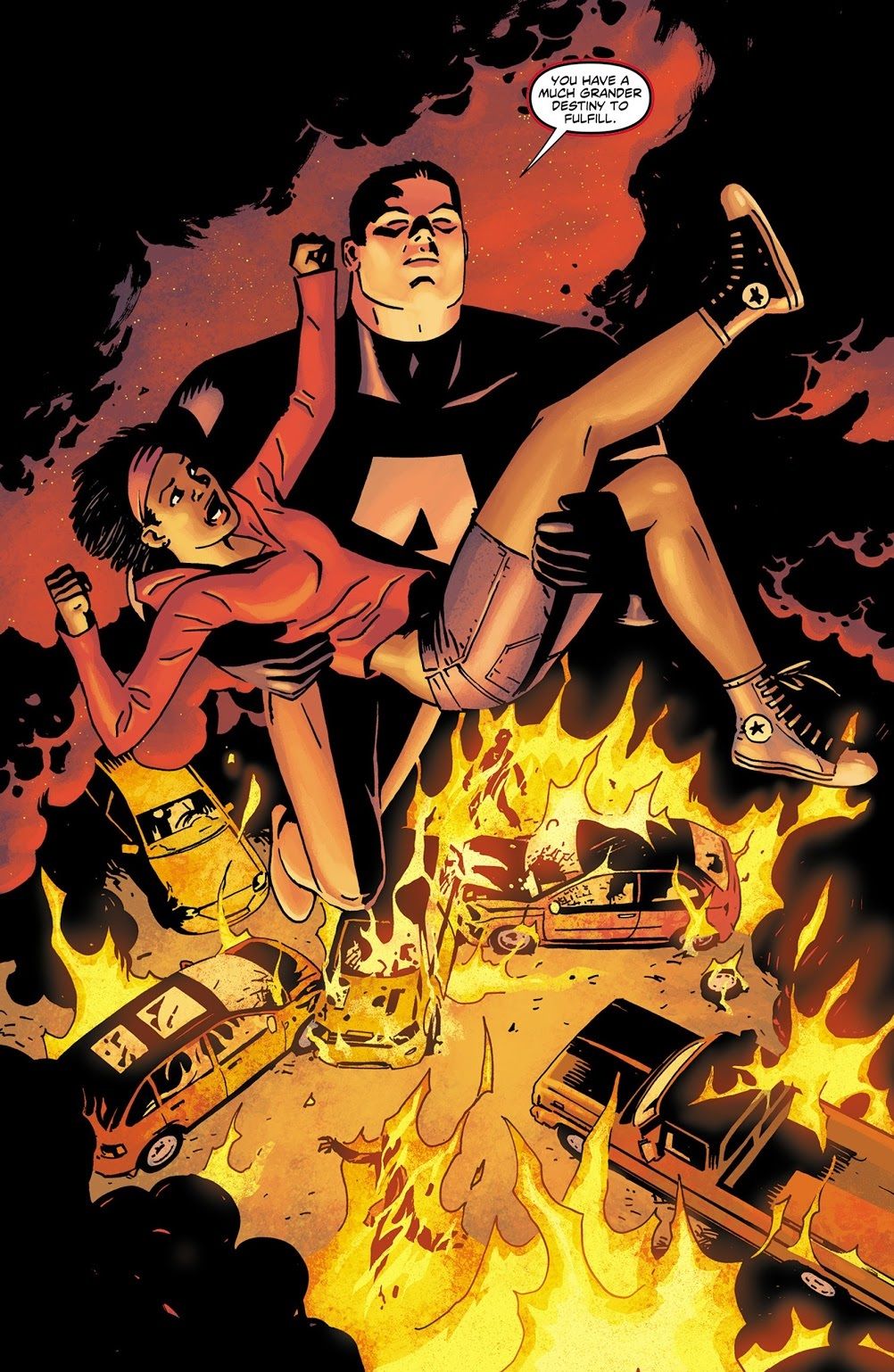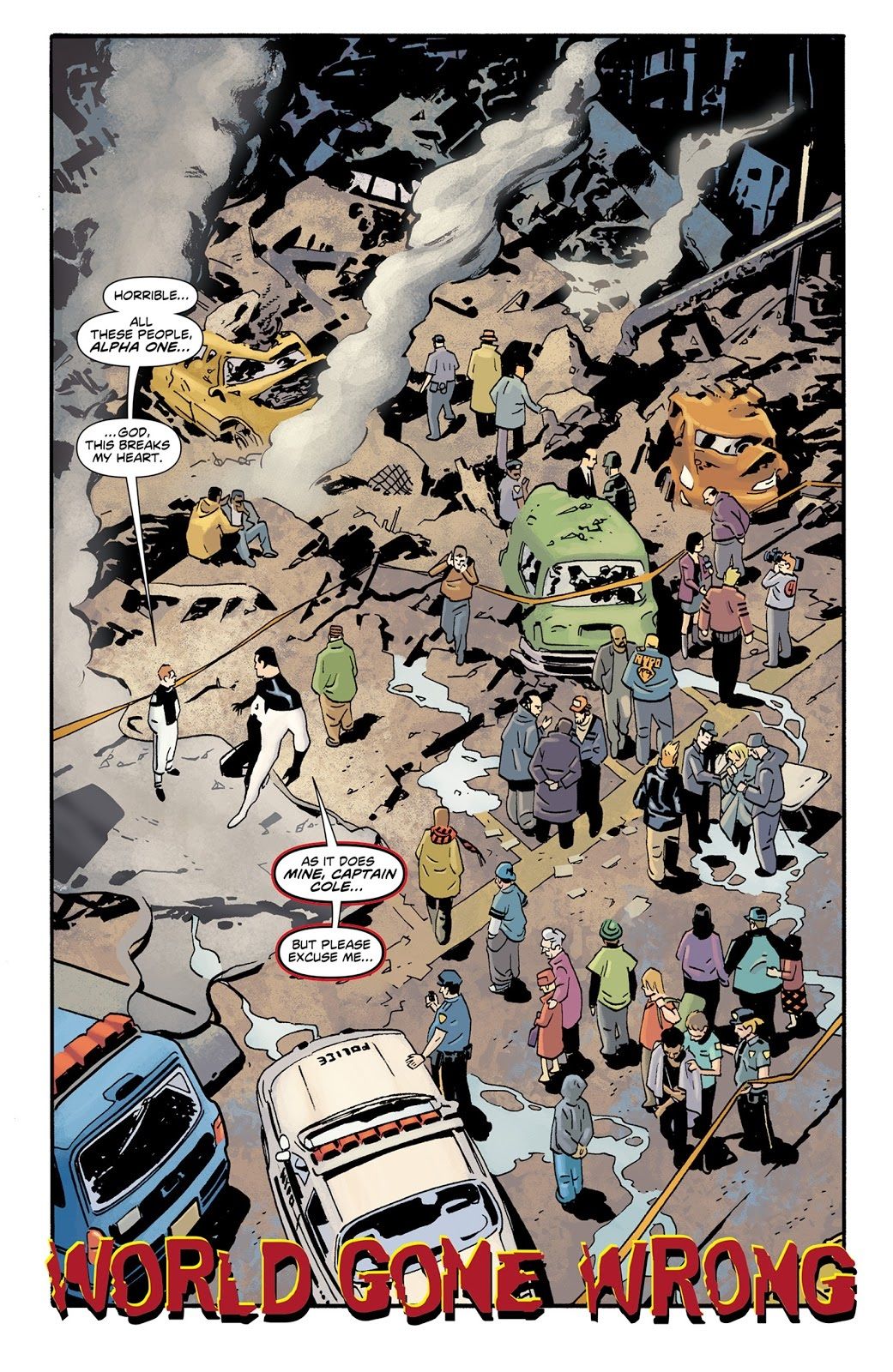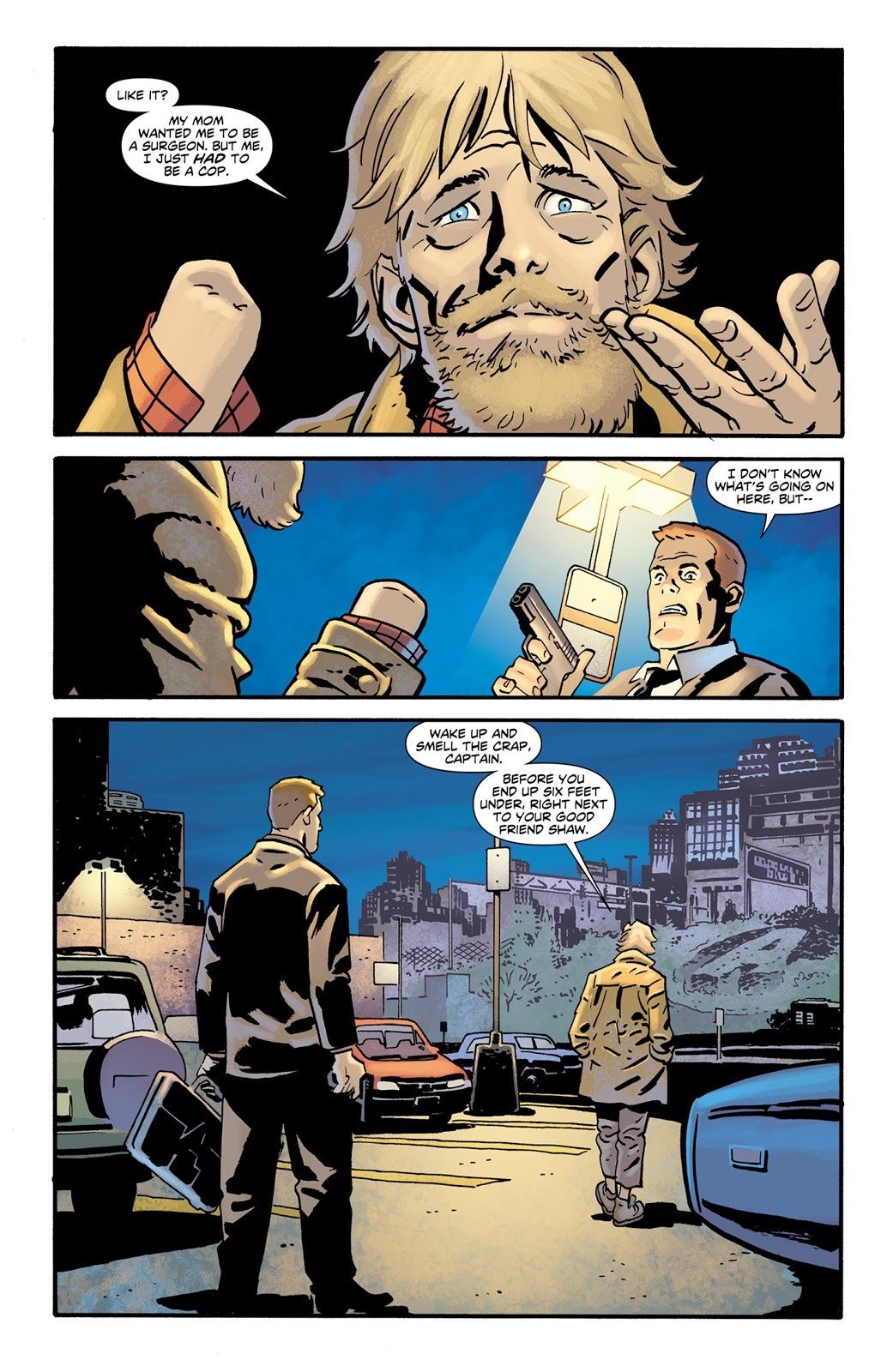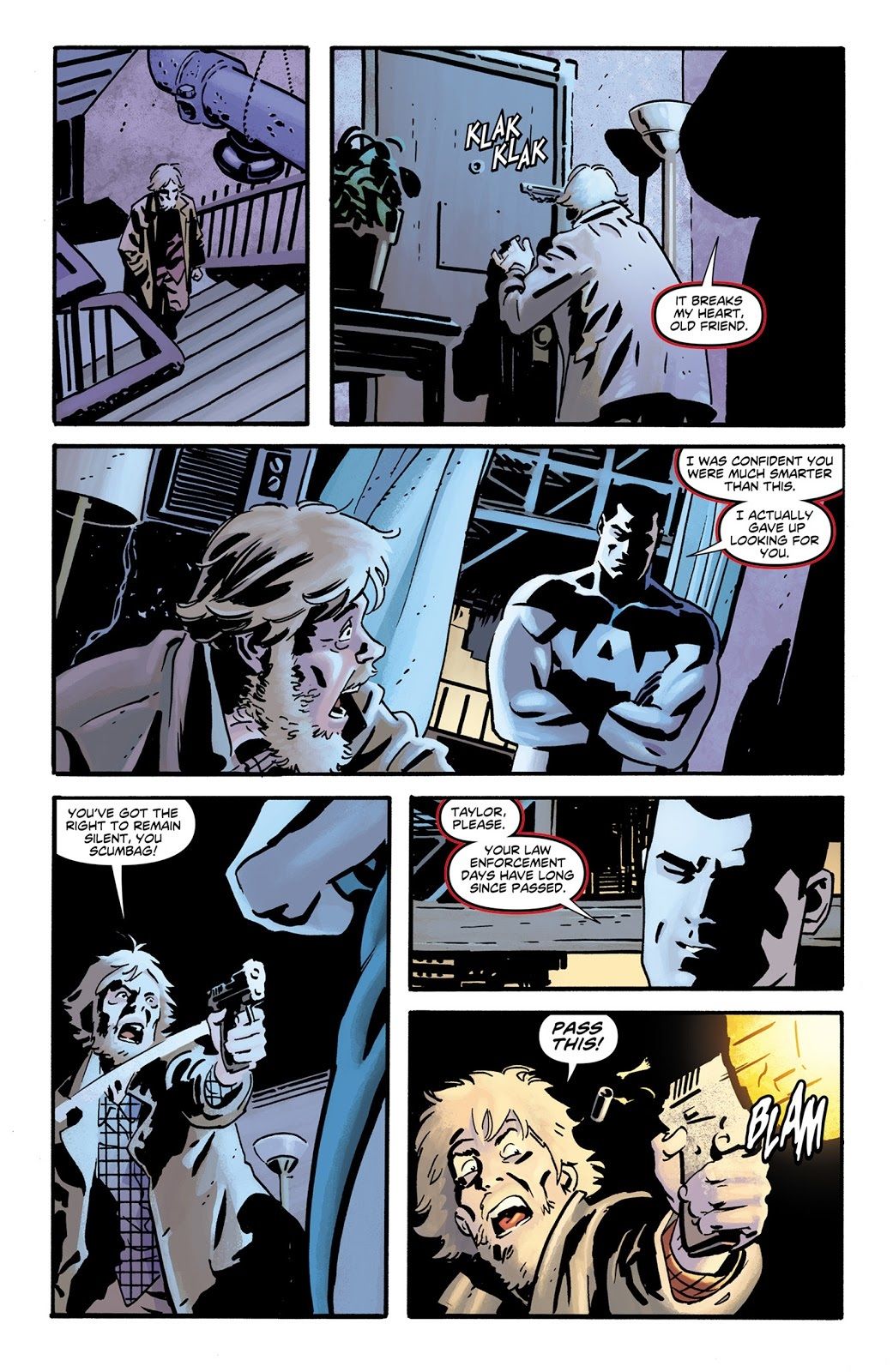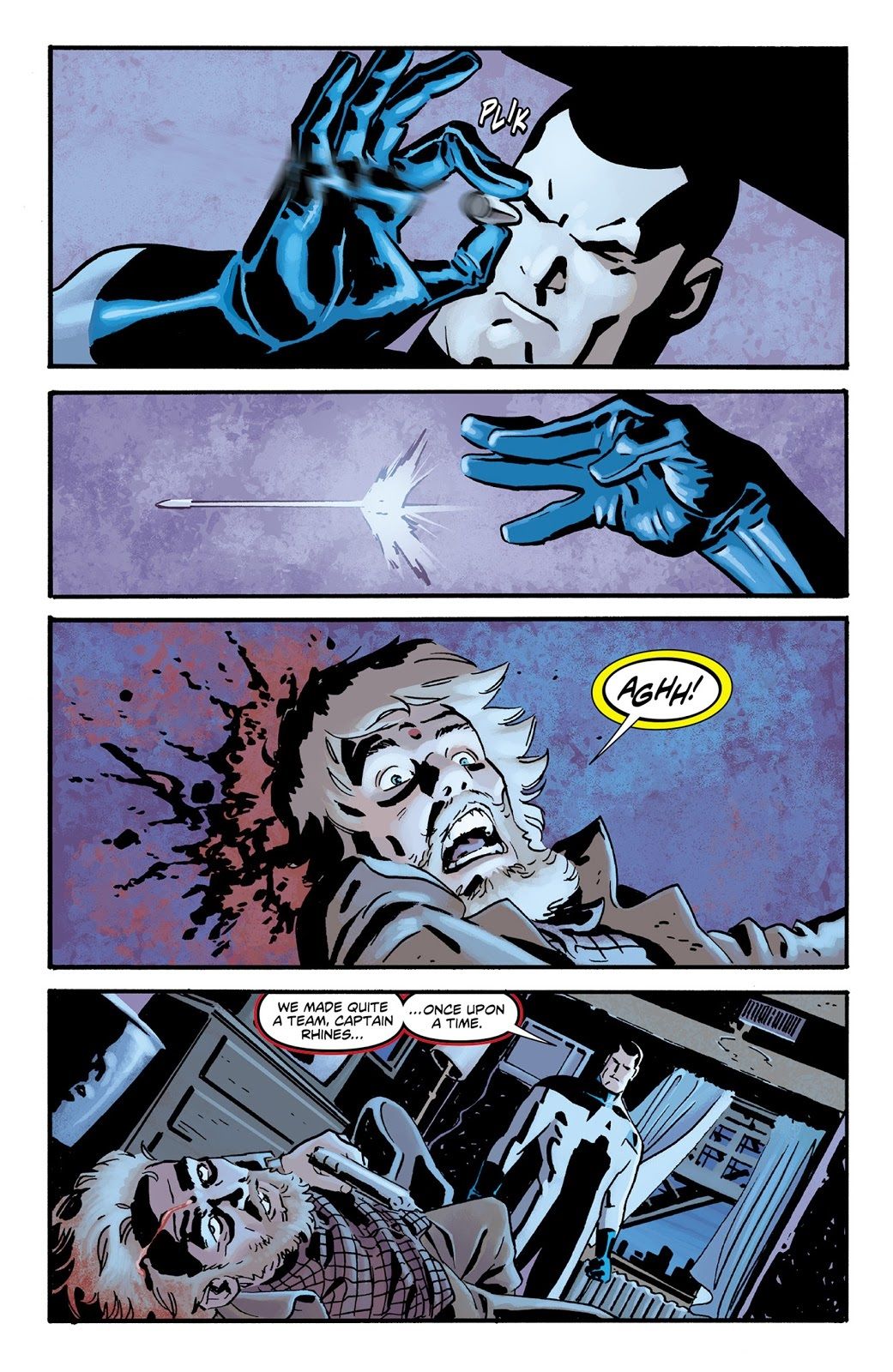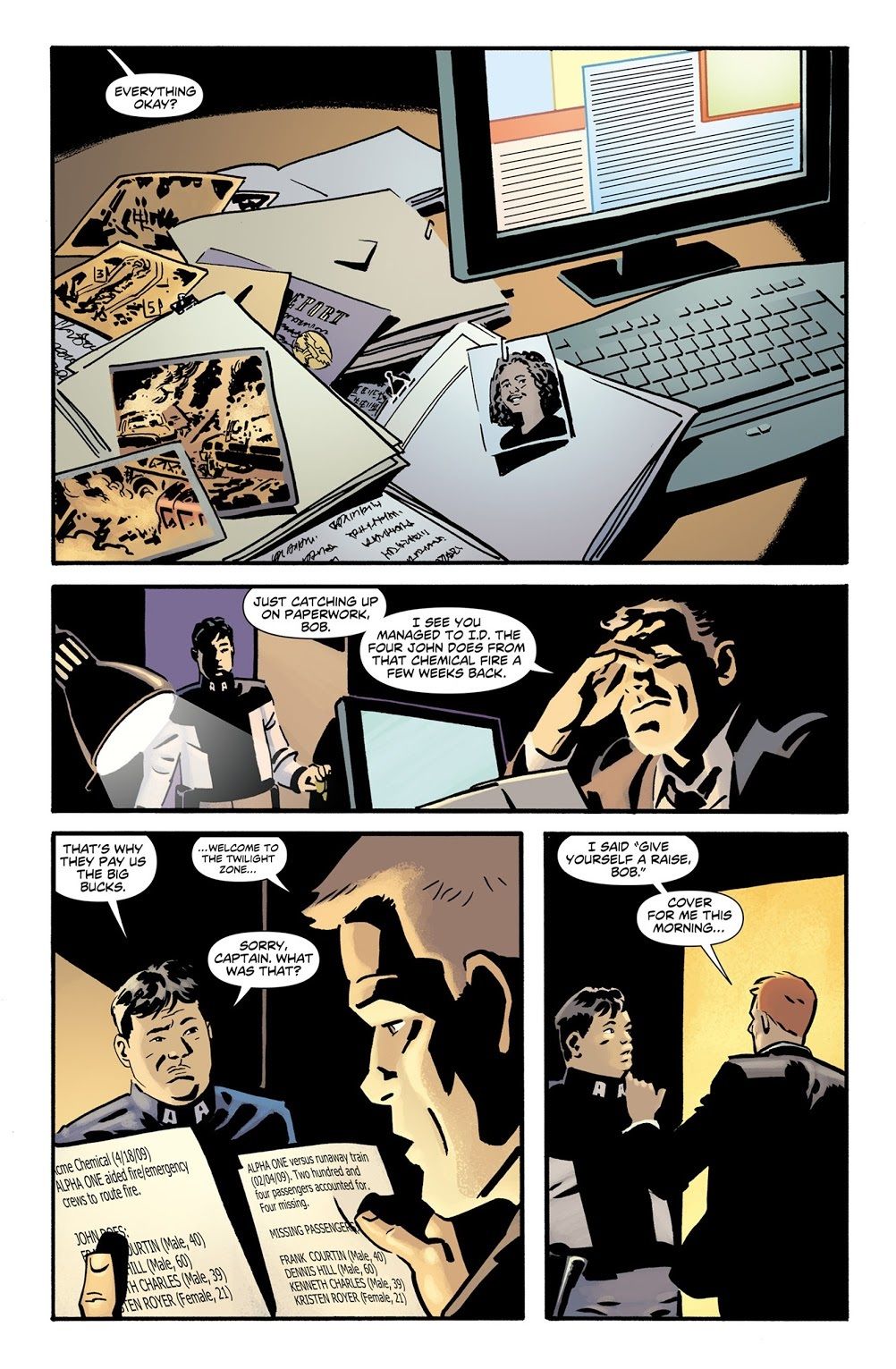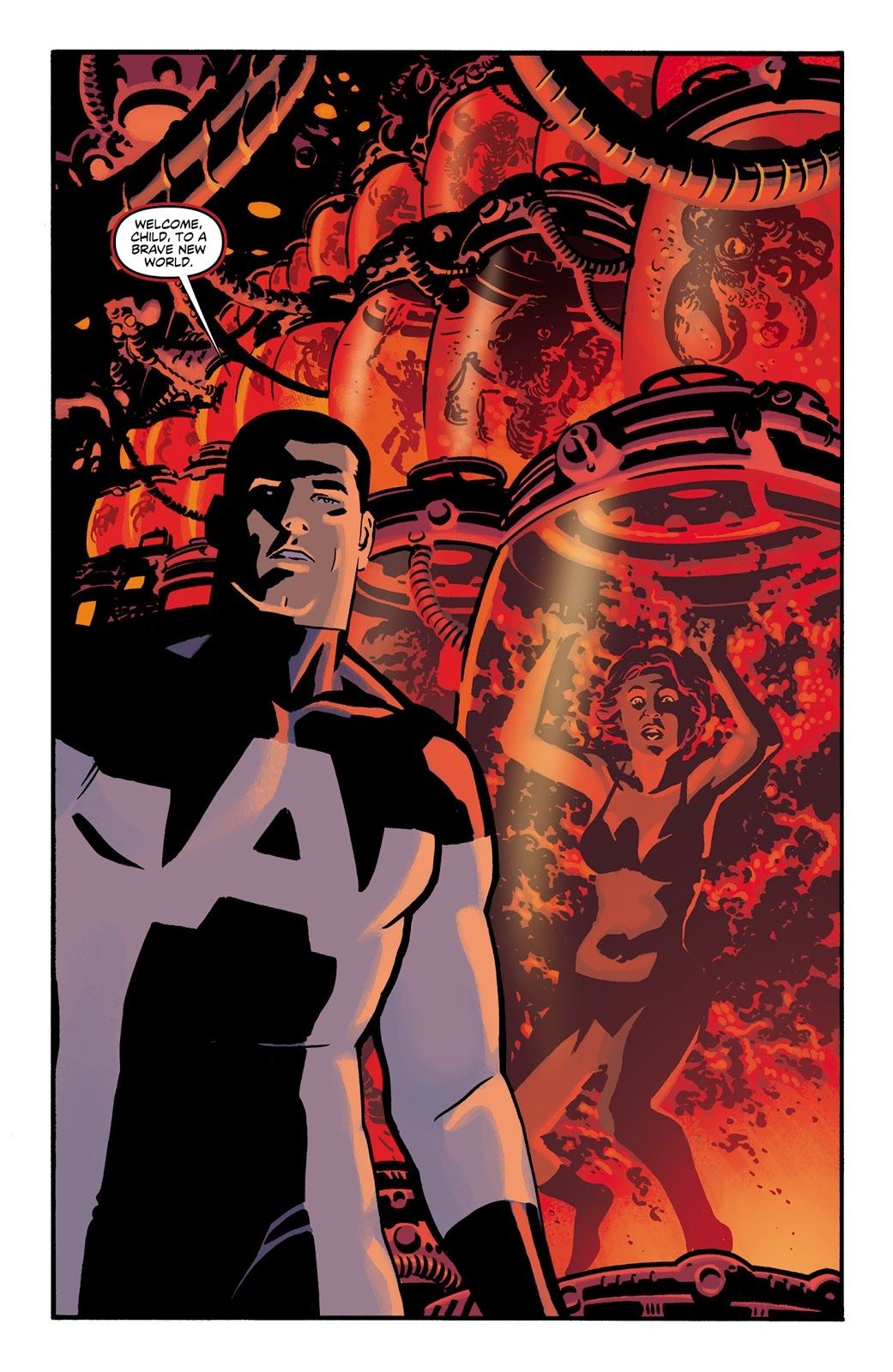This is "Look Back," a brand-new feature that I plan to do for at least all of 2019 and possibly beyond that (and possibly forget about in a week, who knows?). The concept is that every week (I'll probably be skipping the four fifth weeks in the year, but maybe not) of a month, I will spotlight a single issue of a comic book that came out in the past and talk about that issue in terms of a larger scale (like the series overall, etc.). Each week will be a look at a comic book from a different year that came out the same month X amount of years ago. The first week of the month looks at a book that came out this month ten years ago. The second week looks at a book that came out this month 25 years ago. The third week looks at a book that came out this month 50 years ago. The fourth week looks at a book that came out this month 75 years ago.
Today, we look at the first issue of The Mighty drawn by Chris Samnee, as he joined writers Peter Tomasi and Keith Champagne with issue #5 of their 12-issue look at a dark version of Superman (Samnee succeeded the series' original artist, Peter Snejbjerg).
Recently, the independent film, Brightburn, by director David Yarovesky and screenwriters Brian Gunn and Mark Gunn and producer James Gunn, was released and was a minor hit. The film is a horror version of the Superman myth, where a couple discovers an alien in the woods and adopts him. However, when the kid hits puberty and gains superpowers, he does not use the powers for the good of mankind like Superman did.
Edward Douglas had a great interview at The Beat with Brian Gunn and Mark Gunn and they discussed the genesis of the project:
THE BEAT: That would be great. How did this come about? It’s a pretty high concept, and I liked it because it reminded me of Alan Moore’s Miracleman, and it’s really really dark take on superheroics. Was this something you two wrote and then went to James with it?
Mark: We wrote it ourselves on spec a couple years ago, and we were at a barbecue at James’ house with David Yarovesky the director, and he asked me what Brian and I were working on, and I told him about this script we were writing about this superhero horror movie that was an origin story about this younger super-villain. He was very interested in it and asked if he could read it. We sent it to him, he showed it to James, and then James called us one day and said, “Let’s go make this movie. The four of us and Simon Hatt, who is sort of James’ right-hand man and one of the executive producers on the movie, we all got together and figured out how to turn what was a spec that we wrote to be made for a very, very, very small budget into a bigger movie.
Brian: To go back a number of months before that to the genesis of the idea itself, it kind of began frankly when I was in the process of adopting a child and just talking to Mark in our office about the anxieties about bringing a child into our family. It was my second child – Mark has three kids – and we start talking more about parenting and realizing that any time you’re a parent, you’re inviting a stranger into your house. We started talking about how that was a good premise for a horror movie, and we started talking about this whole tradition in comic books of people who find children in the wood, and they bring them into their homes and raise them as their own. Typically, in the comic books, it ends up well, these babies, these foundlings end up noble and heroic. We started asking ourselves “What would happen if these children grew up to be something more sinister?” and once we had that idea, we were off to the races.
The tradition of evil spins on the Superman mythos is a long one that really helps inform a look at both Brightburn and, of course, The Mighty. What's fascinating, though, is that the tradition of "evil Superman" or at least "Superman who is not looking for the best of mankind" actually PREDATED the very idea of Superman!
You see, one of the biggest influences on the creation of Superman by Jerry Siegel and Joe Shuster was Philip Wylie's 1930 novel, Gladiator, about a young man who gains superhuman powers.
The fascinating thing about Wylie's hero, Hugo Danner, however, is that Danner is not particularly interested in helping mankind because he feels detached from humanity due to his powers and he assumes that he would be hated and feared if they really knew anything about him.
Wylie wrote about the issue in the introduction of one of the early printings of the novel...
A temperamental consciousness of material force brought Hugo Danner into being. The frustration of my own muscles by things, and the alarming superiority of machinery started the notion of a man who would be invincible. I gave him a name and planned random deeds for him. I let him tear down Brooklyn Bridge and lift a locomotive. Then I began to speculate about his future and it seemed to me that a human being thus equipped would be foredoomed to vulgar fame or to a life of fruitless destruction. He would share the isolation of geniuses and with them would learn the inflexibility of man's slow evolution. To that extent Hugo became symbolic and Gladiator a satire. The rest was adventure and perhaps more of the book derives from the unliterary excitement of imagining such a life than from a studious juxtaposition of incidents to a theme.
Danner ends Gladiator cut off from the world. His father wants him to create basically a master race, but Danner is disinclined to do so. He is then killed when he is struck by lightning while praying. It is not your typical superhero-style story.
Therefore, what is fascinating is that the first time, then, that Jerry Siegel was actually inspired by Wylie to do an EVIL version of Superman first!
In 1932, Siegel wrote the short story, "The Reign of the Superman."
Joel Eisneberg encapsulated Siegel's early story at Medium...
It was Siegel who wrote The Reign of the Superman in 1932, as inspired by the German Friedrich Nietzsche’s philosophical concept of the Übermensch, or “beyond man,” from his 1883 “Thus Spoke Zarathustra.” In Nietzsche’s parable, the Übermensch becomes a living goal for all of humanity to set for itself. The term “superman” was later popularized in 1903’s Man and Superman, as written by George Bernard Shaw.
In 1912’s Tarzan of the Apes by Edgar Rice Burroughs, Jane referred to Tarzan as “superman,” which Siegel also credited as an inspiration.
In Siegel’s tale, a timid chemist transforms himself into an all-powerful villain determined to dominate the world. Siegel published the work under the moniker Herbert S. Fine, combining the first name of a cousin with his mother's maiden name, according to Wikipedia.
The years went on, and when Siegel spotted a copy of a black and white comic book called Detective Dan, Secret Operative #48 he realized that a heroic main character would be the preferred way to go. Shortly thereafter, a man of steel was born.
Therefore, the idea of an evil Superman seriously did predate the HEROIC version of Superman!
So Peter Tomasi, Keith Champagne and Peter Snejbjerg were working in an area with a rich history when they debuted The Mighty. One of the things that impressed me a lot with the series is how they worked the slow burn of it all.
The first issue opens with us learning the accepted history of Alpha One, an American sailor who was given superpowers from an atomic explosion in 1952...
We then are introduced to Section Omega, the law enforcement group that works alongside Alpha One. We meet their Captain, William Shaw, who has been working with Alpha One for years...
Tragically, though, Shaw arrives at the door of one of his most trusted lieutenants later in the first issue, dying in Gabriel Cole's arms...
Gabriel Cole was an orphan who was saved as a child by Alpha One in an accident that took the life of Cole's parents. Alpha One seems intrigued that his newest Captain is someone who he saved as a child...
In The Mighty #3, a mother is killed during a bank robbery foiled by Alpha One. Cole consoles the woman's young son...
Alpha One is clearly really enjoying his new friendship with Cole and even takes Cole to his lair, where he is way too invested in bonding with Cole...
The last issue by Snejbjerg, #4, really puts the plot into motion. First, Alpha One has become a bit obsessed with Cole and Cole's wife, Janet, and when she approaches Alpha One privately, he assumes that it is something that if very much is not...
At the end of the issue, Alpha One comes to the site of a major car accident, but shockingly, he begins using his powers to KILL survivors and then flies off with one of the survivors!
We knew Alpha One was a bit creepy, but this is a whole other level!
This leads us into Chris Samnee's debut, from June 2009's The Mighty #5. Now, don't get me wrong, I am an absolutely HUGE Peter Snejbjerg fan. I think he's amazing. However, I'm probably an even slightly bigger Chris Samnee fan, and this was right before Samnee really hit big with Thor: the Mighty Avenger (and yes, it is definitely weird that they both have "The Mighty" in the title). In fact, I actually saw that I wrote an article about how awesome Chris Samnee was right before this issue came out (I have been blogging about comic books for a really long time).
The splash page of the fifth issue just follows from the carnage of #4. I only feature it here because it is a Bob Dylan reference and I love Bob Dylan references (I wonder whose idea it was? Tomasi has worked awesome music references into his work before, so I assume it's him, but I guess it could be Champagne)...
Cole is approached by a mystery man who compels him to look into Alpha One more...
Cole realizes that the man is one of his predecessors. Now that he made himself known, though, Alpha One tracks him down and....daaaaaaaaaaaayum..............
Alpha One thinks he has nipped it in the bud, but in reality, he has missed the fact that Cole's curiosity has been piqued...
At the end of the issue, we see that Alpha One is experimenting with the woman he "saved" from the car wreck in the previous issue and all sorts of weird stuff are going on...
That, then, sets up the series for the rest of the run. The ingenuity of Cole versus the power of Alpha One. How do you investigate Superman? And if you actually manage to investigate him, how do you bring him to justice? Especially when you have a wife that you love that is very much a target if you do anything the wrong way.
Tomasi and Champagne have some fun twists in the background of Alpha One (as you might imagine, he didn't really get his superpowers in 1952) and the Cole/Alpha One back and forth is truly outstanding.
This work sort of flew under the radar a bit, as Tomasi and Samnee are both stars now, but they weren't yet when the series came out, so they even took the whole series to Dark Horse to reprint the trade, that's how under the radar it was. It would make for a great movie, though. I'd love to see it get made.
If you have any suggestions for June (or any other later months) 2009, 1994, 1969 and 1944 comic books for me to spotlight, drop me a line at brianc@cbr.com! Here is the guide, though, for the cover dates of books so that you can make suggestions for books that actually came out in the correct month. Generally speaking, the traditional amount of time between the cover date and the release date of a comic book throughout most of comic history has been two months (it was three months at times, but not during the times we're discussing here). So the comic books will have a cover date that is two months ahead of the actual release date (so August for a book that came out in June). Obviously, it is easier to tell when a book from 10 years ago was released, since there was internet coverage of books back then.


